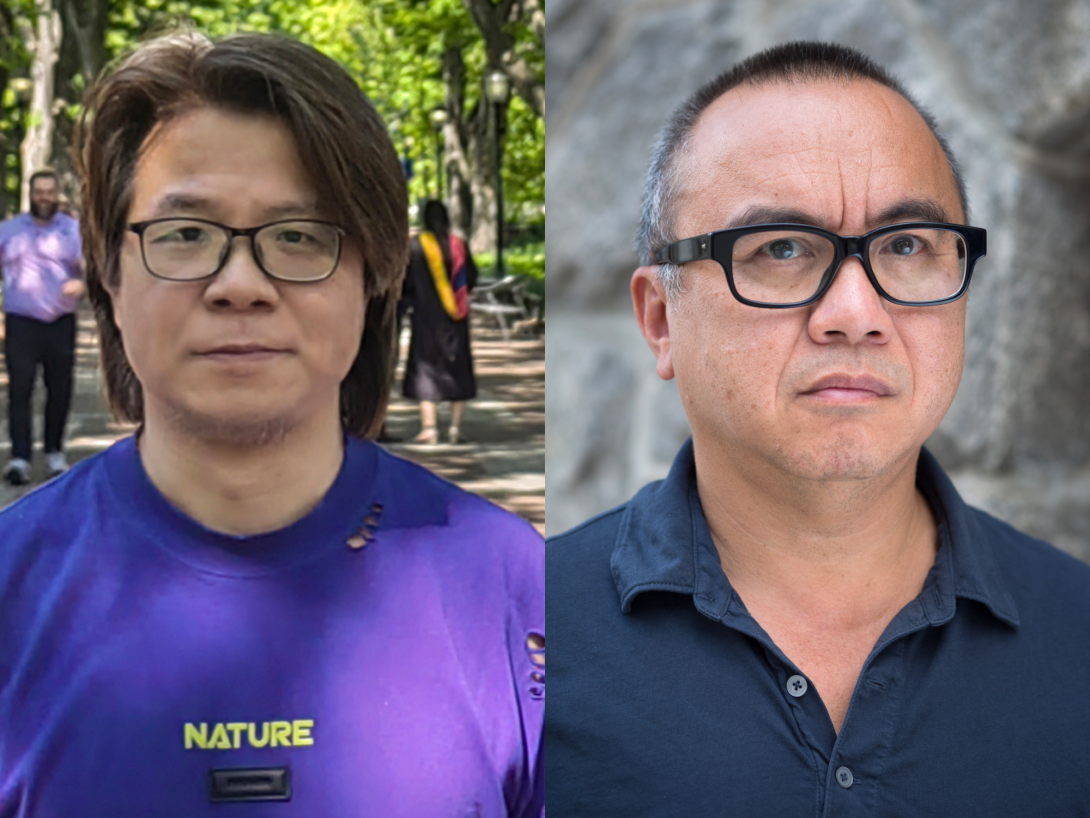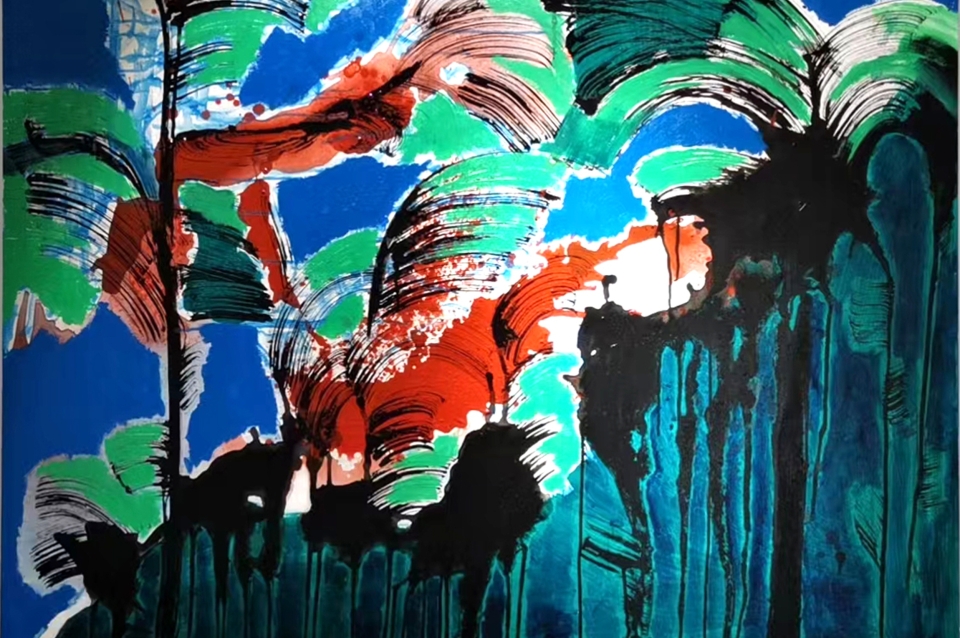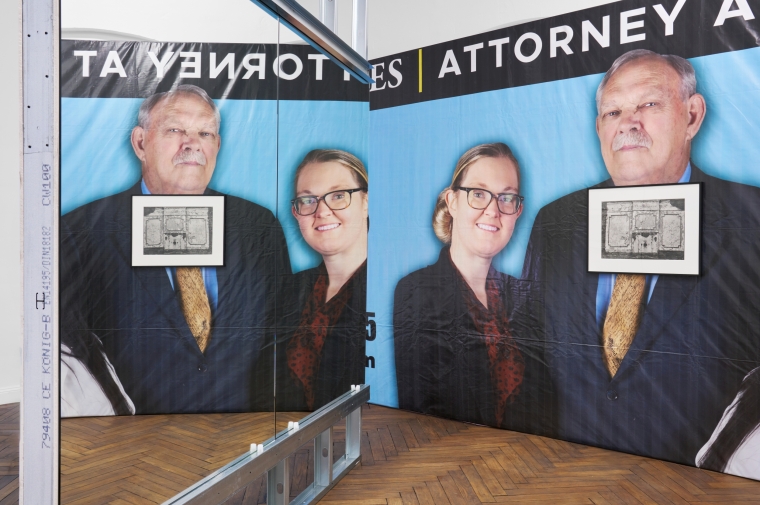May 7, 2025
Stuart Weitzman School of Design
102 Meyerson Hall
210 South 34th Street
Philadelphia, PA 19104
Get the latest Weitzman news in your Inbox
Areas
Media Contact
Michael Grant
mrgrant@design.upenn.edu
215.898.2539
Ken Lum is an artist and the Marilyn Jordan Taylor Presidential Professor of Fine Arts. He spoke with artist Xianghua Liu, a visiting scholar at Weitzman and an associate professor at Minzu University of China, ahead of the opening of the exhibition The Quest for Truth in the Idea of the Garden, which is on view at the Charles Addams Fine Arts Gallery, 200 South 36 Street, Philadelphia, from May 25 through June 8, 2025.
What do you do, and why were you interested in coming to the University of Pennsylvania?
I specialize in environmental art, design, and public art, and I’ve had the pleasure of teaching traditional Chinese garden design there for the past twenty years. Being a part of the University of Pennsylvania and the Weizmann School of Design has been exciting!
Tell me something about your excitement being here.
I am delighted to share my journey from last October as I embark on a new path in my artistic and academic pursuits. The scholars Liang Sicheng and Lin Huiying, who graduated from this esteemed institution 100 years ago, are a significant source of inspiration for me. Their remarkable contributions to China hold immense value.
Could you illuminate the significance of Liang and Lin to China?
Absolutely! Liang and Lin are pioneers in China’s design field. They were among the first architects to study in the West and returned home, bringing valuable insights from modern education and century-old design principles. Their influence on Chinese architecture and design education is crucial today, primarily due to their experiences at the University of Pennsylvania. Everyone in China’s art and architecture knows their names and their association with Penn. The campus and buildings of Minzu University of China were designed by Liang Sicheng in the 1950s. Over the past 20 years, I have taught my students in these Chinese neo-classical teaching building designed by Liang Sicheng.

Xianghua Liu and Ken Lum
What has it been like for you in the United States this past year?
I’ve been in the US for over half a year now. Time has flown by. I am enjoying Philadelphia very much. I appreciate Philadelphia’s importance as one of America’s oldest cities and the original capital of the United States. I came here eager to learn about the education system, and I have learned a lot; much of its strength owes to the rich multicultural environment, with students and faculty from around the world.
I’ve had the opportunity to experience first-hand the education system and cultural differences. It is very different from China!
Can you expand on that?
There’s a stronger sense of personal autonomy at the individual level. I’ve observed that the distinctions between individuals are much more physically and mentally defined here. For example, in China, it’s common for your shoulders to touch someone else’s when you’re in line or in a crowded store, which is generally accepted. Here, I’m careful to avoid any accidental physical contact with others. I can cite another example.
Please do.
In China, you can easily get phone numbers from other people. It’s normal to know other people and exchange phone numbers.
You cannot contact others without their consent here. Indeed, people value their privacy much more.
Can you tell us something about Minzu University?
Minzu University plays a crucial role in the whole of China, not only in Beijing. In Mandarin, “Minzu” means Nationalities and refers to "minority,” highlighting its association with minority groups. Minzu University of China in Beijing was founded in 1951, just two years after establishing the New China. The Minzu University of China plays an important role in China's higher education system and the cause of national unity and progress. Since its establishment, the University has delivered more than 200,000 graduates of all ethnic groups to the country. The University currently has three campuses in Haidian, Fengtai and Hainan, and has established a "one University, three sites" school-running pattern. China has 55 officially recognized minority groups, and the objective the Minzu University is to cultivate outstanding talents of all ethnic groups and ensure that educational opportunities in higher education are available to them. This matter holds significant importance in China. Historically, a tradition in China, dating back over several dynasties, emphasizes the strength derived from the unity and harmony of its peoples by fostering national cohesion. Consequently, various Minzu universities have been established across different provinces, creating a network that has produced many distinguished graduates in China. Numerous individuals hold prominent positions at the local, regional, and national government, and in state-owned enterprises as well as private companies.
Does the Minzu University in Beijing have a different name from those in the provinces?
Yes, I teach at Minzu University of China, which is a national public university. In Hubei province, where I am from, for example, there are two Minzu universities: one named South Central-Minzu University and the other Hubei Minzu University.
What kinds of students are attracted to Minzu University? What is the proportion of minority status students as well as teaching faculty?
Some students are interested in learning about Chinese minority issues, including aspects related to culture, economics, and linguistics etc. Upon graduation, many return to their native areas to work. It is very competitive, although priority is given to applicants with minority status compared to Han Chinese applicants.
At Minzu University, where I teach, over 50% of the students are from minority backgrounds, and nearly 50% of the teaching faculty also belong to minority groups.
Do you teach architecture, landscape architecture, or planning in the Fine Arts Department at Minzu, like at the Weitzman School?
There is no independent Architecture Department in the Academy of Fine Arts at Minzu; however, there are courses on landscape architecture design and environmental design that overlap with architecture.
“Gardens are not merely considered physical and material forms, but spaces that serve as a dwelling for the soul.”
Can you say something about the exhibition you have planned to open in the Addams Gallery at the end of May?
This exhibition serves as both an introduction and an act of exchange. I recognize that landscape architecture holds significant strength here, and this exhibition merges fine art thinking with garden concepts, which is a very important subject in China. It also emphasizes practice over theory. Additionally, I will conduct a hands-on workshop on garden cultural ink painting for those interested. On a personal note, it is an opportunity for self-learning by deepening my understanding of a subject that has captivated me for several decades by testing ideas for an American audience. The subject of gardens is inherently cooperative. This stems from the philosophical concept of traditional China gardening: heaven and earth are born together with me, and all things are one with me. In Chinese culture, truth is not external, but could exist in the garden dwelling where human and nature are united. Creating a hill also means creating a pond in China gardening. They shape each other, It’s not about conquering the world but finding shared opportunity within it. The order of human beings in the world is shared. We share the same fate, the same future. It’s important to think about cooperation, communication, and the opportunity to exchange. I have been practicing this concept in my creations and art project planning in past 20 years, now I am trying to put it into practice in my daily work and life.
My original idea for this exhibition centered on the theme of great truth without division, which may resonate more in the Chinese language than in English. The concept is rooted in Daoist and Buddhist traditions of Chinese gardening. In China, the notion of a garden has a long history deeply embedded in Chinese culture. Gardens are not merely considered physical and material forms, but spaces that serve as a dwelling for the soul.
What do you hope to take away [from your experience at Penn] when returning to China?
I am reminded of the value of travel and cultural exchange. The last time I spent considerable time away from China was a decade ago when I worked on a project with the University of Melbourne in Australia. I remember how impactful my time in Australia was for me. I gained a new sense of purpose and an expanded vision of life. This is true for my trip to Philadelphia. I feel rejuvenated since coming here.


 Expand Image
Expand Image

